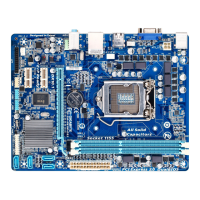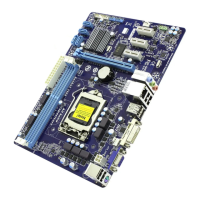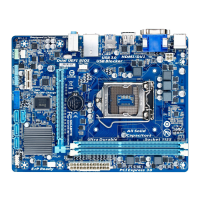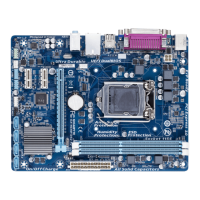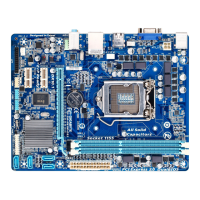- 24 -
ExtremeMemoryProle(X.M.P.) &
(Note)
Allows the BIOS to read the SPD data on XMP memory module(s) to enhance memory performance when enabled.
Disabled Disables this function. (Default)
Prole1 Uses Prole 1 settings.
Prole2
(Note)
Uses Prole 2 settings.
System Memory Multiplier (SPD) &
Allows you to set the system memory multiplier. Auto sets memory multiplier according to memory SPD
data. (Default: Auto)
Memory Frequency (MHz) &
The rst memory frequency value is the normal operating frequency of the memory being used; the second is
the memory frequency that is automatically adjusted according to the System Memory Multiplier settings.
(Note) This item is present only when you install a CPU and a memory module that support this feature.
Advanced Memory Settings `
ExtremeMemoryProle(X.M.P.) &
(Note),
System Memory Multiplier (SPD), Memory
Frequency(Mhz)
The settings under the three items above are synchronous to those under the same items on the Advanced
Frequency Settings menu.
Performance Enhance &
Allows the system to operate at three different performance levels.
Normal Lets the system operate at its basic performance level.
Turbo Lets the system operate at its good performance level. (Default)
Extreme Lets the system operate at its best performance level.
DRAM Timing Selectable &
Quick and Expert allows the Channel Interleaving, Rank Interleaving, and memory timing settings below
to be congurable. Options are: Auto (default), Quick, Expert.
ProleDDRVoltage &
When using a non-XMP memory module or ExtremeMemoryProle(X.M.P.) is set to Disabled, this item
will display as 1.50V. When ExtremeMemoryProle(X.M.P.) is set to Prole1 or Prole2, this item will
display the value based on the SPD data on the XMP memory.
ProleVTTVoltage &
The value displayed here is dependent on the CPU being used.
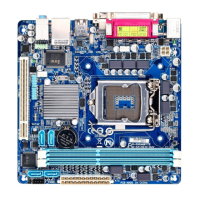
